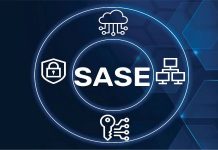Technology has been present in our everyday lives for decades. We use it for work, fun, and even for learning. However, we don’t discuss enough about technology in early education, like preschool and kindergarten. And it is being used more and more in that area too. It can help kids learn in exciting ways, but it can also have some downsides. Therefore, let’s explore the good and the bad of using technology in early education.
Pros of Integrating Technology in Early Education
1. Fun and Engaging Learning
Technology makes learning fun for kids. Apps and games turn lessons into exciting activities. For example, interactive storybooks help kids read by using pictures, sounds, and touch. This keeps kids interested and helps them understand new things.
For instance, imagine a preschool where kids use a tablet to read a storybook. The book has animations, sounds, and things to touch that make the story come alive. Pedirayudas Instead of just listening to a teacher, kids can play with the characters, tap on words to hear them, and answer questions. As a result, this makes learning fun and keeps kids engaged.
2. Personalized Learning
Every child learns at their own pace. Some kids need more time to understand things, while others learn quickly. Technology can help by giving personalized learning experiences. For example, adaptive learning software changes the difficulty of tasks based on how each child is doing. This way, no child feels left out, and those who learn quickly can keep moving forward.
For instance, a math app might start with easy counting exercises. If a child has trouble, the app will offer more practice and simpler tasks. If the child is doing well, the app will add more challenging problems. This way, each child gets the right level of support and can learn at their speed. Teachers can also use these tools to see how each student is doing and adjust their teaching to help them better.

3. Building Digital Skills
Knowing how to use technology is very important today. When kids use tablets, computers, and other devices, they learn basic skills like typing and using apps. These skills are important for school and future jobs.
In preschool, kids might start with simple tasks like drawing shapes on a touchscreen or playing games that teach them to use a mouse or keyboard. As they grow, they get better with technology and learn skills they will need later on. Overall, getting used to technology early helps kids feel more confident using it.
4. Promoting Teamwork and Communication
Many tech tools help kids work together and talk to each other. Digital platforms can make it easier for children to work on group projects, share ideas, and communicate with their friends. Therefore, this helps them build teamwork and social skills for future group activities in school and life.
For example, a classroom might use a digital whiteboard where kids can draw and write together. So, they can work on projects, share their ideas, and learn to communicate better. Some apps let kids create stories or presentations together, which promotes teamwork. Overall, a holistic approach in preschool education helps kids learn how to work with others, share tasks, and improve their communication skills.
5. Access to a World of Resources
Technology gives kids access to lots of resources. They can go on virtual field trips, explore online libraries, and learn about different cultures, history, and science. This helps them see and understand more than just what’s in their classroom.
For example, imagine a preschool class learning about animals. Instead of just looking at pictures, they can watch videos of animals in their homes, take virtual tours of zoos, and play games about different animals. This makes learning more fun and helps kids love learning even more.
Cons of Integrating Technology in Early Education
1. Too Much Screen Time
One big worry is that kids might spend too much time in front of screens. For example, too much screen time can cause problems like eye strain, sleep issues, and less physical activity. So, it’s important to balance screen time with other activities, like playing outside, reading books, and doing hands-on projects. This helps keep kids healthy and active.
Also, preschoolers need a lot of physical activity to stay healthy and develop their motor skills. If they spend too much time on screens, they might miss out on playing outside and running around. Therefore, parents and teachers should set limits on screen time and encourage kids to do different activities to keep a balanced and healthy lifestyle.
2. Distractions from Learning
Technology can be a great learning tool, but it can also be distracting. Games, videos, and other content might make it hard for kids to focus on their studies. So, parents and teachers need to make sure technology is used for learning and not just for fun.
For example, a child might start using an educational app but then get distracted by a game or video. Adults need to keep an eye on how technology is used and set clear rules about when and how it can be used. This increases focus on learning, instead of distracting the kids.
3. Not Everyone Has the Same Access
Not all families can have the same access to tech devices. So, some kids might not have tablets, computers, or good internet at home. As a consequence, this can make it harder for them to keep up with their classmates.
To help, schools and communities can provide devices for students to use at home. Additionally, they set up places where kids can access technology. It’s important to make sure all kids have the same chance to learn with digital tools.
4. Less Face-to-Face Interaction
Preschool is a time for kids to learn how to share, cooperate, and talk with others. So, if they use too much technology, they might not get enough practice with these skills.
Technology can overall help with learning, but it shouldn’t replace talking and playing with others. Most importantly, kids need to interact with friends and teachers to develop good social skills. Activities that involve working together and talking should be a big part of early education, with technology used to support these activities.
5. Dependence on Technology
Kids might end up relying too much on technology for learning and fun. This can make it harder for them to think and solve problems without screens. So, it’s a good idea to mix both technology and traditional learning methods.
Encourage kids to enjoy activities that spark creativity and problem-solving without screens. For example, playing with blocks, drawing, and using their imagination can help them build these skills. By combining traditional fun with technology, kids can learn in a well-rounded and balanced way.
In short, using technology in early education has many benefits. It makes learning fun, helps kids build digital skills, and encourages teamwork. It also gives children access to lots of resources. But there are some challenges, like too much screen time, distractions, and unequal access to technology.
To get the most from technology, we need to balance it with traditional learning. Combining tech with hands-on activities helps kids learn better. Parents and teachers should guide and watch over how technology is used to ensure kids stay healthy and develop social skills.
Overall, technology can make early education better by making it engaging and personalized. It helps with digital skills, teamwork, and access to resources. However, we need to be careful about screen time and other challenges. By mixing technology with traditional methods, and with good guidance, technology can be a great tool for young learners.






